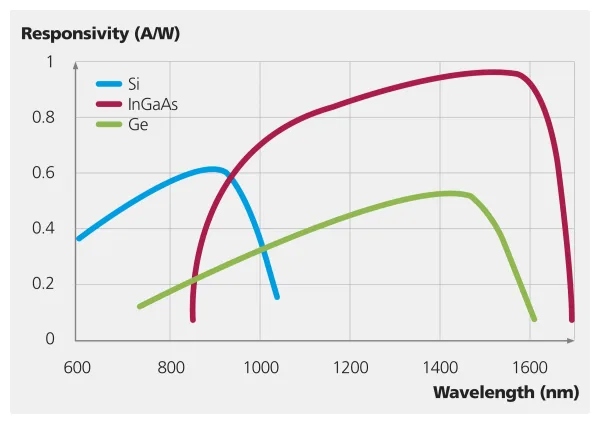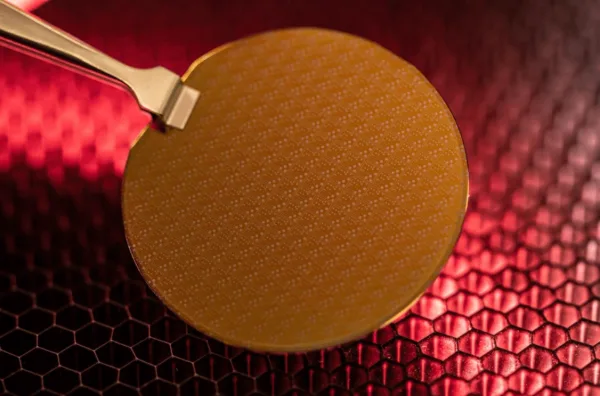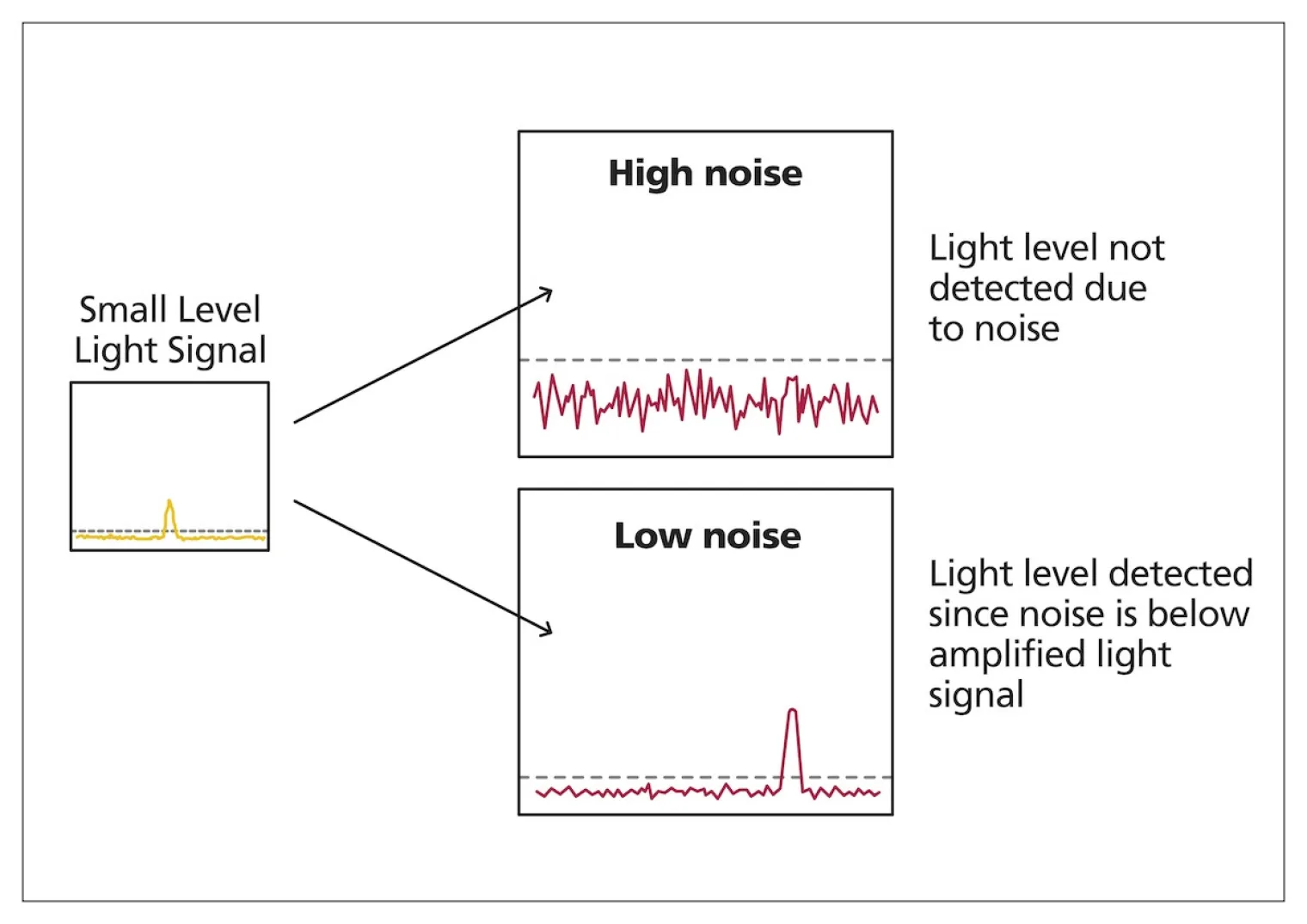Aura Noiseless InGaAs® Avalanche Photodiodes (APDs) Technology Backgrounder
What is an Avalanche Photodiode or APD?
A photodiode (PD) is a type of diode that converts light energy into electrical energy, when incident light falls on the PD it generates a current flow directly proportional to the intensity of light. If the intensity of light at the PN junction of the PD is increased, then the reverse current also increases.
Avalanche Photodiodes (APDs) are highly sensitive semiconductor-based photodetectors that can multiply the current generated by the light falling on them via an avalanche process. As with PDs, APDs convert photons into an electrical current, but APDs have a multiplication factor that amplifies the current generated by a single photon to produce a measurable signal. This results in higher sensitivity than PDs and as such APDs are ideal for low-level light detection and photon counting.
Standard APDs are operated with a reverse voltage, which is normally just below breakdown, to achieve the maximum internal gain for the APD. In this region carriers, electrons, and holes, are excited by absorbed photons and strongly accelerated in the strong internal electric field so that they can generate secondary carriers, as shown in the diagram. The avalanche process effectively amplifies the photocurrent by a significant factor enabling APDs to be used for very sensitive detectors, which need less electronic signal amplification and are thus less susceptible to electronic noise.

Common APDs are typically available on Silicon or InGaAs and many configurations are available to provide a wide range of sensitivity and speed options, with some targeting specific wavelengths for particular applications. Applications include:
- Laser range finders
- LiDAR
- Optical time domain reflectometers (OTDRs)
- Optical fibre communications
- Imaging
- Laser microscopy
- Raman spectroscopy
- Gas sensing
- Quantum communications
- Free space optical communications
Why Indium Gallium Arsenide (InGaAs) is used
Silicon-based avalanche photodiodes are sensitive in the wavelength region from 200 to 1100 nm, with the maximum responsivity occurring around 900 nm. Depending on the device and the reverse voltage applied, the multiplication factor of silicon APDs can vary between 50 and 1000. For longer wavelengths, up to roughly 1700 nm, APDs based on germanium or indium gallium arsenide (InGaAs) are used, with typical current multiplication factors of 10 to 40. Normally InGaAs APDs are significantly more expensive than those based on germanium, but exhibit superior noise performance and a higher detection bandwidth. The high absorption rate of the InGaAs coefficient allows the use of a thin absorbing layer. Other options include germanium/silicon (GeSi) devices, where radiation is absorbed in germanium, and the carriers are transferred into a silicon region for charge multiplication. These are not popular due to their high dark current.
Wavelength absorptions for APDs for various materials
InGaAs APDs have been commercially available for several years and used primarily in telecommunication applications.

Wavelength absorptions for APDs for various materials.
How antimony has been used to create a Noiseless InGaAs® APD
Phlux has developed "Noiseless InGaAs APD™" technology that delivers up to 12X higher sensitivity, produces less than one-tenth of the noise of traditional InGaAs APDs, and exhibits stable high-temperature performance, fast overload recovery, and 10X lower temperature drift. Allowing APD gains over 100 without producing excess noise, Noiseless InGaAs APD technology was achieved by incorporating antimony (Sb) alloys into the diodes' epitaxial structure.

What makes a good APD?
Several characteristics of high-performance (or good) APDs are interrelated. Often there is a compromise between speed, sensitivity, noise, linearity, optical damage threshold, and APD gain. Noiseless InGaAs APD technology offers leading-edge performance for the low noise, high sensitivity, and high gain required for high-performance LIDAR, laser range finding, and Optical Time Domain Reflectometry (OTDR) systems.
Why High Gain?
A high-gain APD enables the detection of lower light levels or fewer photons. This is achieved by multiplying the small amount light to produce a signal above the noise floor of the transimpedance amplifier (TIA). Current APDs have a useful gain of between 10 - 40 before the noise of the APD becomes dominant. Phlux APDs can operate with a gain of over 100. Typically, high gain is close to the breakdown voltage of the APD, however with Noiseless InGaAs® APD technology the APD can achieve high gain well away from the breakdown voltage, enabling stable operation.
Why High Sensitivity?
Receiver sensitivity is the lowest received signal power at the detector at which the signal can be decoded or recognised satisfactorily, so the lower the sensitivity the more sensitive the detector is to light. One way of measuring this sensitivity is by using Noise Equivalent Power (NEP). The NEP is the amount of optical power applied at the detector which will equal the noise of the detector or system, or in other words, the NEP is the optical power that results in an Signal-to-Noise Radio (SNR) of 1.
Why Low Noise?

Low noise is essential in being able to amplify the photons/light at low levels. If the noise is such that it is higher or the same as the photons being detected, then it will just be amplified in the system and the light detection will not be possible. Therefore, low noise must be inherent in the APD if the gain can be utilised.
Summary
This backgrounder explains the basics of APDs and outlines the benefits that Phlux’s Noiseless InGaAs® APD technology provides. The technology enables the development of extremely low noise, improved sensitivity, and high-gain detectors and with these benefits, facilitates a step change in the performance of laser range finders, LiDAR, and optical time domain reflectometry (OTDR) systems.